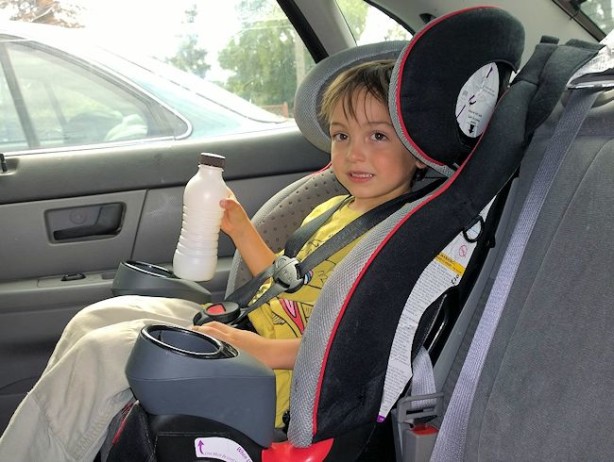Car accidents are a leading cause of injury and death among children, which is why car seat safety is something every parent should make a priority.
Proper use of car seats significantly reduces the risk of injury and death in the event of a crash.

To help protect our children, almost every state and province in North America has created laws regarding the use of car seats.
If you’re not sure about the best practices when using a car seat, read on to learn more about types of car seats, guidelines for proper installation, and the importance of following age and size recommendations.
Types of Car Seats
There are several types of car seats, each designed for children of different ages and sizes. These include:
- Rear-Facing Infant Seats: Suitable for newborns and infants up to at least one year old, or until they reach the weight or height limit specified by the manufacturer.
- Convertible Seats: Can be used in both rear-facing and forward-facing modes, accommodating children as they grow. They are suitable for both infants and toddlers.
- Forward-Facing Seats: Designed for toddlers and young children who have outgrown rear-facing seats, typically until they reach around 4 years old, or the height and weight limit specified by the manufacturer.
- Booster Seats: Intended for older children who have outgrown forward-facing seats but are not yet tall enough to use a seat belt alone. Booster seats elevate the child to ensure proper positioning of the seat belt.
Guidelines for Proper Installation
Proper installation of car seats is crucial for ensuring their effectiveness in protecting children during a crash. Follow these guidelines for correct installation:
- Read the car seat manufacturer’s instructions carefully before installation.
- Use either the vehicle’s seat belt or the Lower Anchors and Tethers for Children (LATCH) system. Never use both simultaneously unless approved by both the vehicle and car seat manufacturers.
- Ensure the car seat is tightly secured to the vehicle’s seat, with minimal movement.
- For rear-facing seats, adjust the recline angle according to the manufacturer’s instructions to provide adequate support for the child’s head and neck.
- Check the harness straps for proper positioning and tightness. The harness straps should be snug, with no slack, and positioned at or below the child’s shoulders for rear-facing seats and at or above the shoulders for forward-facing seats.
- Regularly inspect the car seat for any signs of wear or damage, and replace the seat if necessary.
- When in doubt, ask a professional for assistance. Many areas offer free car seat installation clinics, where experts will check your car seat’s installation and make any necessary adjustments.
Car Seat Age and Size Recommendations
Most car seats come with both age and size recommendations. While using the age-appropriate recommendations for a car seat can be useful, your child’s height and weight are equally important.
General guidelines for car seat use tend to follow these rules and regulations:
- Rear-Facing Seats: Children should remain in rear-facing seats until they reach the maximum weight or height limit specified by the manufacturer, usually until they are at least two years old.
- Forward-Facing Seats: Once children outgrow rear-facing seats, they should transition to a forward-facing seat with a five-point harness, and remain in this type of seat until they reach the maximum weight or height limit recommended by the manufacturer.
- Booster Seats: Children should transition to booster seats once they outgrow forward-facing seats, and continue to use them until they are tall enough to fit properly in a seat belt alone, typically around 4ft 9in tall and between 8 and 12 years old.
- Seat Belts: Children should use seat belts only when they can sit with their backs against the vehicle seat, knees bent over the edge of the seat, and feet touching the floor. The shoulder belt should lie across the chest and shoulder, not the neck or face, and the lap belt should fit snugly across the upper thighs, not the stomach.
Understanding Car Seat Safety Laws
Car seat safety laws vary across North America and are subject to change, so it’s essential for parents to stay informed about the laws in their jurisdiction.
Common car seat safety laws may include the following requirements:
- Rear-facing seating for infants and young children up to a certain age or weight threshold.
- Forward-facing seating with harnesses for toddlers and young children.
- Booster seat usage for older children who have outgrown forward-facing seats but are not yet tall enough for seat belts alone.
- Age, height, and weight requirements for transitioning between different types of car seats.
- Penalties for non-compliance with car seat safety laws, including fines and possible legal consequences.

Proper use of your child’s car seat is essential for protecting them from injuries and fatalities in car accidents.
Make sure that you have the type of seat your child needs, and that it’s been properly installed.
By prioritizing car seat safety, parents can provide their children with the best possible protection while traveling on the road.
